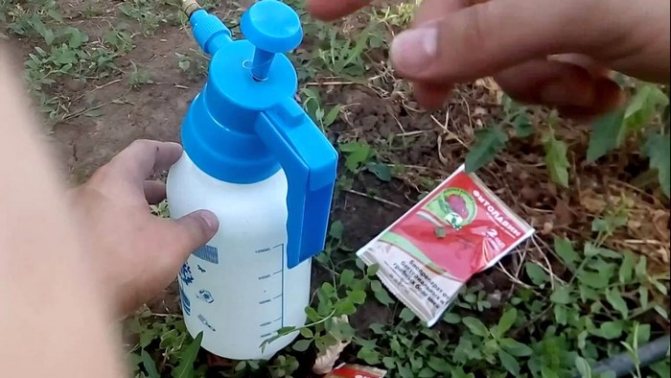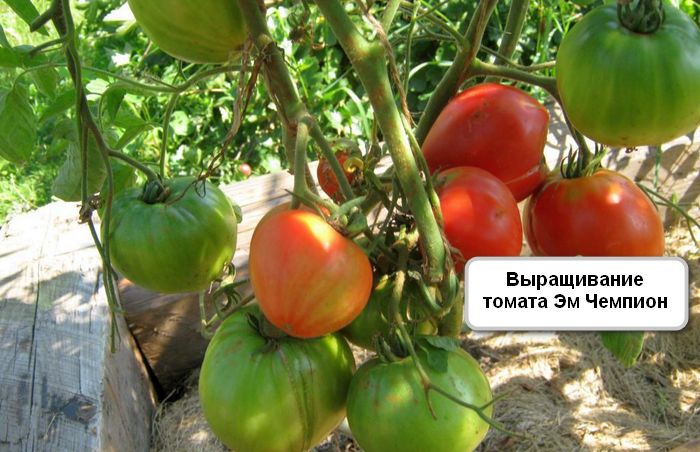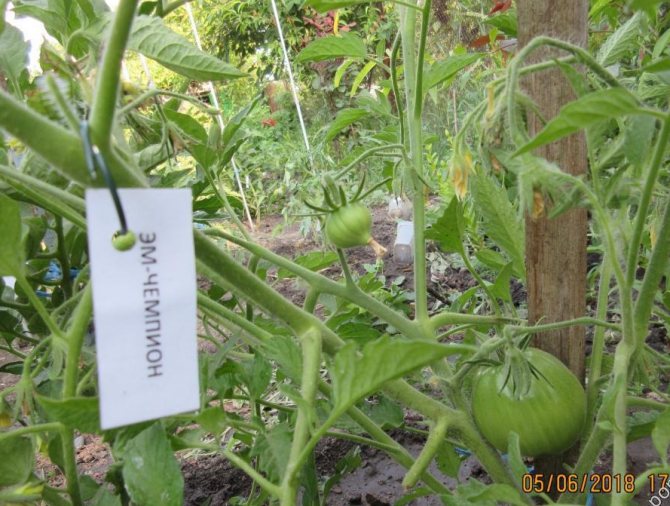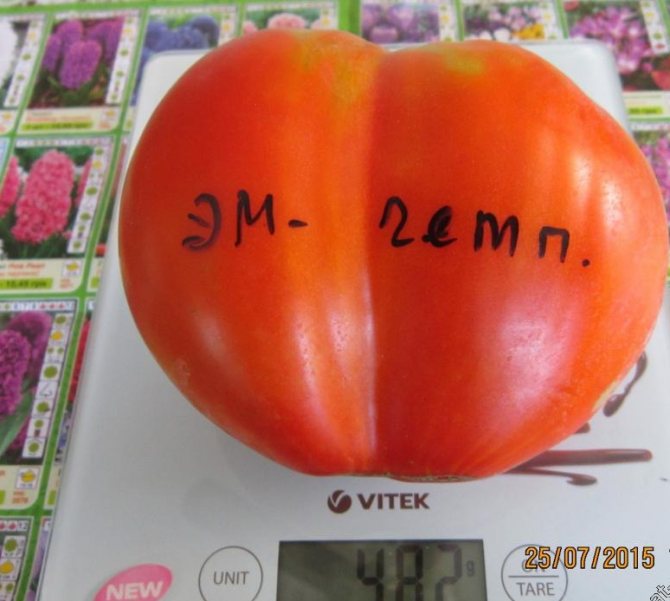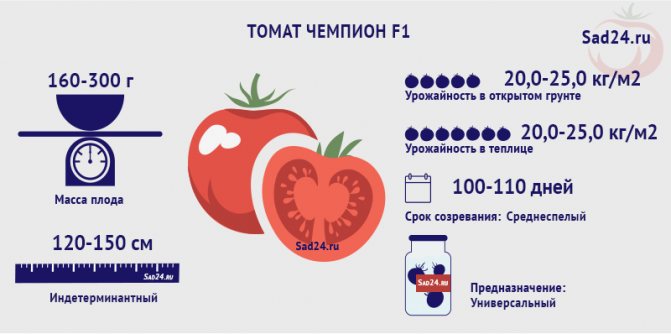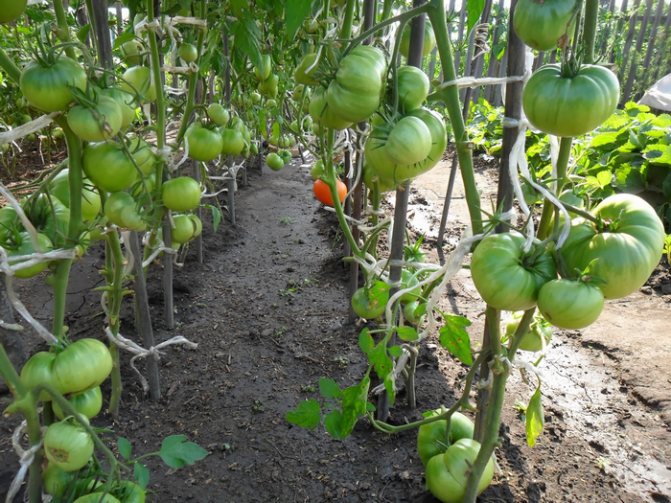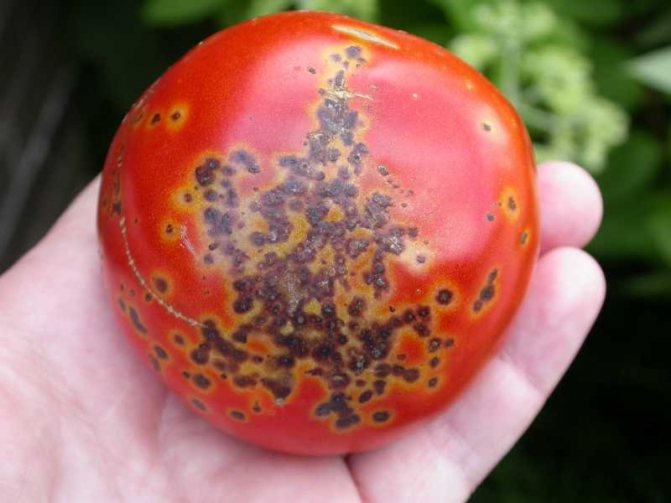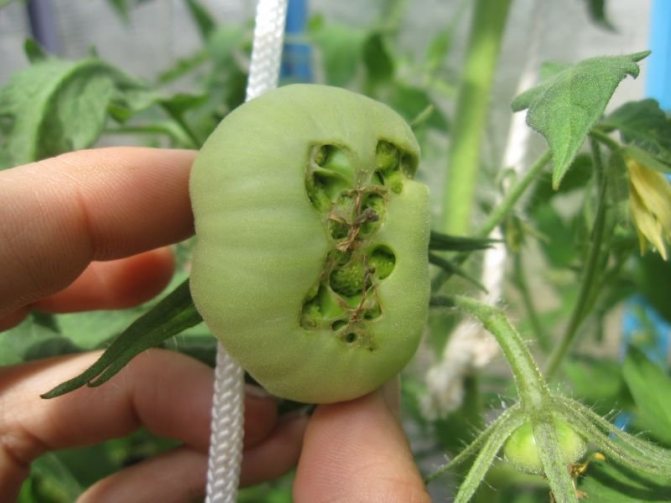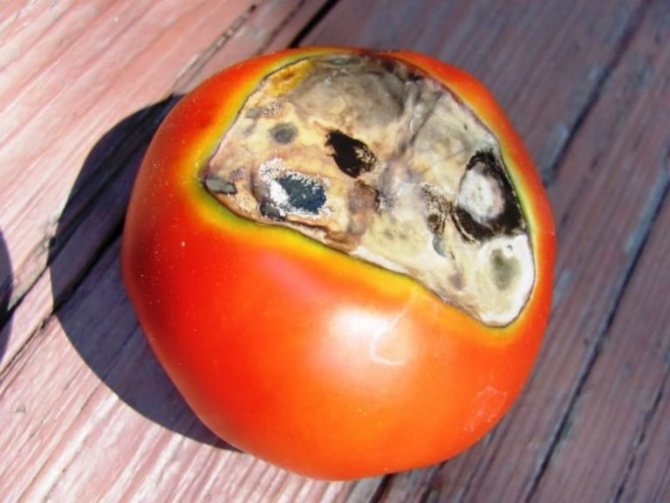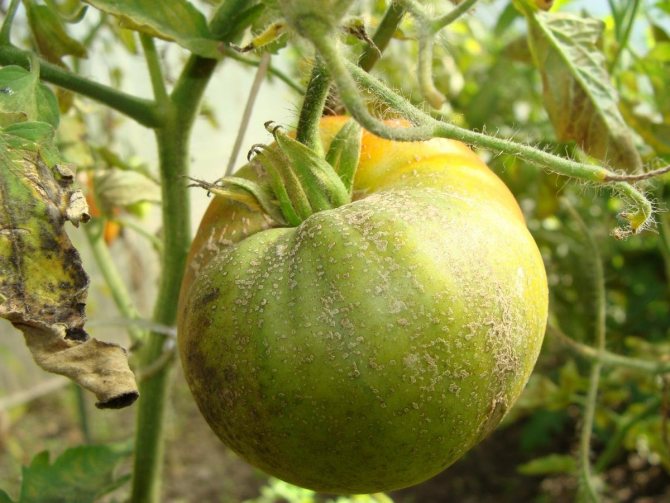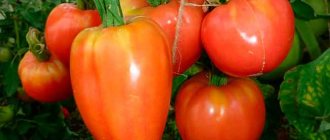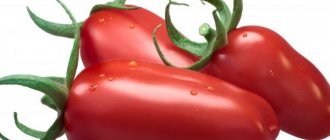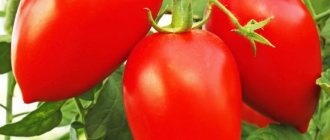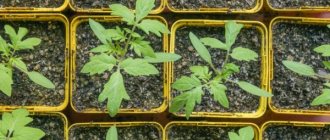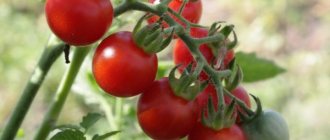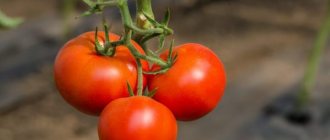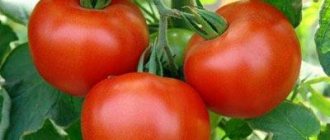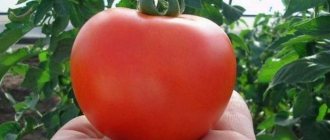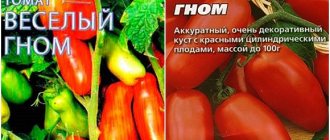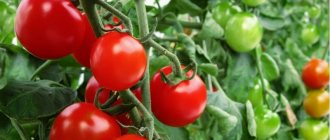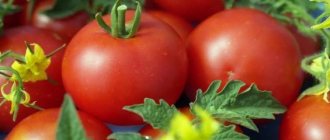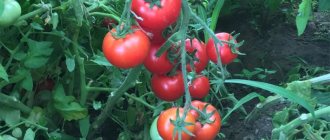Novosibirsk breeder V.N. Dederko is well known to gardeners all over Russia. He owns interesting varieties of tomatoes, including EM-Champion, which received high marks from tomato growers in Siberia and the Urals. The variety was registered in the State Register of Breeding Achievements of the Russian Federation in 2005, and received admission in all regions of the country. Recommended for open ground in garden plots, home gardens and small farms. Grows well indoors. It is not a hybrid, which means that self-collected seeds will show the same excellent result.
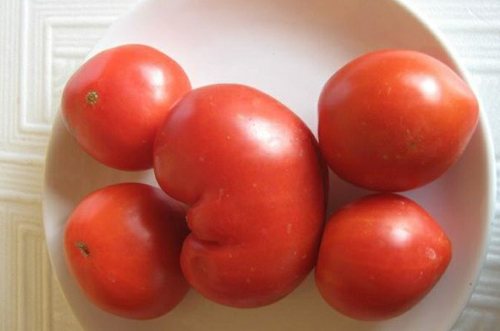
Characteristics and description of the variety
Em Champion was bred by Siberian breeders, entered in the State Register of Breeding Achievements in 1982.
Determinate bush, height - no more than 70 cm, medium foliage, large leaves. Due to its low height, this variety can be bred in an apartment on the balcony. The first inflorescence is laid over 5-7 leaves, the subsequent ones - every two leaves. On one seedling, 4-5 fruitful clusters are formed.
The species is mid-season, from the moment of planting to full maturation, 100-110 days pass.
Differs in high resistance to the main diseases of the Solanaceae family, in particular, it is practically immune to fungal diseases.
The yield is high, up to 7 kg of fruits are harvested from one plant, provided that four bushes are planted per 1 sq. m.
The tomato is recommended for outdoor cultivation. In cold regions, it is bred in protected structures.
Despite its small growth, the plant requires a mandatory garter, otherwise the stem will not withstand the weight of ripe fruits. When growing in open beds, it does not need pinching.
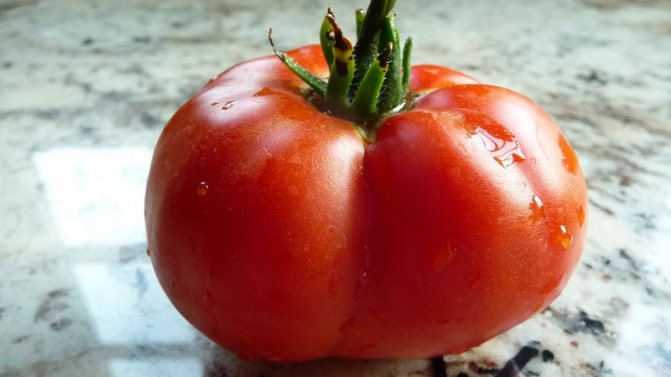

The fruits are large, the average weight of one is 350-450 g. They have a crimson color, rounded and slightly flattened shape (see photo). There are 4-5 seed chambers. The taste is excellent, harmoniously combining sugariness with sourness.
Vegetables are consumed fresh and used for the preparation of winter preparations (barrel pickles, pickles and conservation).
Ripe tomatoes are not subject to long-term storage; they do not retain their presentation during transportation. For this reason, the crop is not grown commercially.
Main characteristics
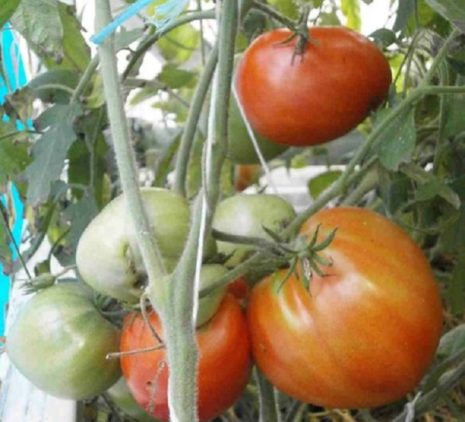

Ripening dates and growing regions
Tomato "Em Champion" has an average ripening period. The first fruits can be harvested in 100-110 days from sowing. The variety from the collection of "Siberian Garden" firmly endures sudden temperature changes and gives an excellent harvest in any region of Russia. Developed by breeders for growing in the ground without shelter, but according to the reviews of summer residents of the northern regions, it feels great in closed ground.
Description of plants
Determinant plants of this variety do not grow higher than 60-65 cm. The bushes are very neat, with a few large leaves of the usual shape. The first brush with flowers is laid over 5-7 sheets, all subsequent ones with an interval of 2 sheets. The growth of the plant ends with a shoot with an inflorescence, as a rule, after the formation of 4-5 fruit clusters. The seed manufacturer recommends pinching the bushes only before the first cluster of fruits appears.
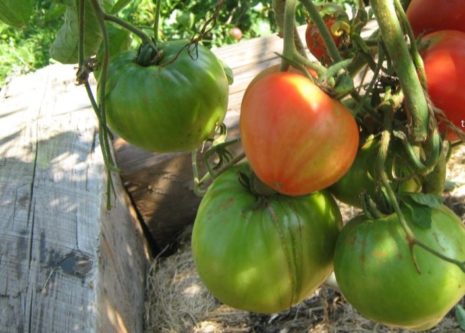

Features and purpose of fruits
On small bushes of "Em Champion" rather large fruits grow, weighing from 200 to 400 grams. Ripe tomatoes of a beautiful raspberry-pink color have a classic oval, slightly flattened, heart-shaped shape. Tomatoes are distinguished by a thin skin, soft and delicate pulp with increased sugar content and a pleasant balanced sweet and sour taste. Ripe tomatoes of this variety are not at all easy to lay. Therefore, the fruits ripened on the bush are immediately consumed fresh or put into processing.
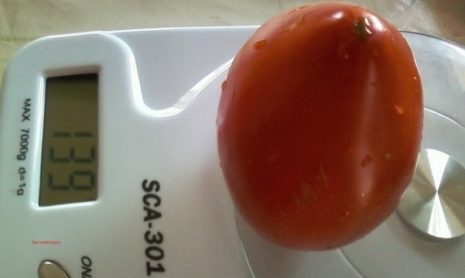

Such tomatoes are good for vegetable salads, making juices, sauces and lecho. Admirers of this variety manage to keep tomatoes fresh and edible for a short time by picking them from a bush at the stage of milky ripeness.
In order to extend the shelf life of your favorite tomatoes with poor keeping quality, without reducing the taste, you need to follow several rules:
- you need to remove the fruits green, but have reached the size characteristic of this variety;
- collection should be carried out only in dry weather and in the daytime;
- only whole and undamaged fruits are suitable, without signs of disease;
- fruits for the destruction of bacteria are wiped with vodka or alcohol, then dried;
- each tomato is wrapped in paper and placed in boxes upside down in two layers;
- a refrigerator or cellar would be a good storage place;
- stocks are checked once a week, tomatoes with the slightest signs of damage are removed;
- a week before the intended use, the tomatoes are placed in a warm and bright place for ripening.
Yield
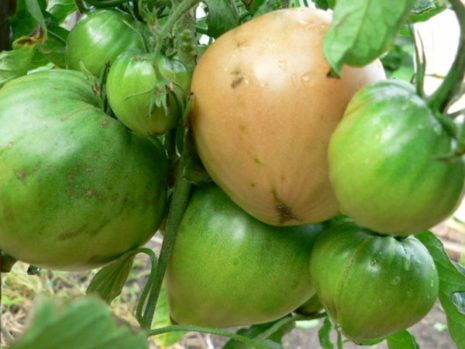

The variety is characterized by excellent yield. One compact bush forms 4-5 fruit clusters, each of which has 3-5 weighty tomatoes. Thus, up to 7-8 kg of fruits can be removed from one plant.
Advantages and disadvantages
The Em Champion variety has many positive qualities, thanks to which it is in great demand among gardeners:
- unpretentious care;
- high resistance to diseases;
- high rate of fruiting;
- good adaptation to weather conditions in the open field;
- resistance to sudden changes in temperature;
- does not require compulsory pinching;
- the possibility of breeding on the balcony;
- good fruit taste;
- large size of vegetables;
- the possibility of self-selection of seeds for the next planting.
Negative qualities include:
- short shelf life for ripe vegetables;
- the need for a garter;
- the impossibility of cultivating crops on an industrial scale.
Harvesting and storage
At the end of July - at the beginning of August, the tomato harvest begins. Cleaning in the morning in dry weather. It is advisable not to pluck the stalk: this way you can keep the fruit longer. As for the Em Champion variety, it is not stored for a long time. This tomato is not grown for storage, but for consumption and processing.
Tom Champion tomatoes are an excellent choice for growing for pickling, pickling and other types of preservation. The fruit is also tasty when fresh, it is juicy, moderately sour, moderately sweet. Growing it will not be difficult if you take into account all the nuances and do not neglect the rules of agricultural technology and care.
Features of planting and care
Sowing begins 60 days before planting seedlings in open ground. The final dates are determined in accordance with the climatic characteristics of the region.
Both common wooden boxes and individual plastic cups or peat pots serve as planting containers. Small holes are made at the bottom of the containers so that excess moisture does not linger during watering.
The containers are filled with nutrient soil, which is prepared from a mixture of garden soil with peat and humus in equal parts. The prepared soil is scalded with boiling water or watered with a solution of dark manganese - this way the pathogenic flora is destroyed.
Before sowing, the seeds are disinfected in a weak solution of potassium permanganate and treated with a growth stimulator to improve germination.
The seed is placed at a depth of 1.5 cm and compacted well from above.
Reference. When planted shallowly, most seeds germinate together with the seed coat, which noticeably slows down their further growth.
After planting, the containers are covered with foil and left in a room at a temperature of at least 23 ° C. At the first shoots, the planting containers are rearranged to a more illuminated place, but not to direct sunlight.
Water a little, without waterlogging the soil. After each watering, the soil is loosened with a fork or wooden stick.
When two true leaves appear, the seedlings dive, seating them in separate containers. The day before picking, the sprouts are watered for easier extraction from containers without damaging the root system.
Two weeks before transplanting into open ground, young bushes begin to harden. To do this, they are taken out into the open air for 2-3 hours. The night temperature in the room is reduced to 13 ° C. Gradually, the time spent on the street is increased to 18 hours.
Outdoor cultivation
After 60 days, the seedlings are ready for transplanting. The best option for seedlings is loamy soil, therefore, if there is a lot of clay in the soil, it is necessary to add river sand or peat in the amount of 3-4 buckets per 1 sq. m. Compost is applied as fertilizer (two buckets per 1 sq. m.).
Planting pattern: 40 cm - distance between seedlings, 50 cm - between rows. Superphosphate and ash are added to each well.
It is best to replant in cloudy weather or in the evening. After transplanting, the beds are moderately watered with warm, settled water under the root of the plant.
Regular watering is established as young bushes take root. They water no more than twice a week, with the exception of hot days, when the number of waterings is increased up to 3-4 times.
After watering, the beds are loosened and mulched. These procedures not only have a beneficial effect on the development of seedlings, but also serve as preventive measures in the fight against pests.
The plant is fed three times a season with complex fertilizers or organic matter. As an organic matter, a remedy made from nettle and dandelions, which is infused in the sun for 10 days, is well suited. Before watering, the infusion is diluted in a ratio of 1:10.
Reference. Organic fertilizers must be diluted in a large ratio, otherwise the root system may burn.
Despite its small growth, the culture needs a compulsory garter. To do this, next to each bush, wooden stakes or a metal support are installed. As they grow, they are fixed to the supports and branches, since they do not support the weight of ripe fruits.
Tomato Em Champion does not need compulsory pinching. The stepchildren are removed only initially, until the first fruitful brush is formed.
Harvest and use of vegetables
This tomato has established itself as a high-yielding crop. One small plant forms up to five fruitful clusters, each of which develops up to six weighty fruits. Consequently, up to 7 kg of vegetables are obtained from one plant, and from 1 sq. m - up to 28 kg of excellent tomatoes.
The only negative is the short-term storage of ripe vegetables. When they are massively harvested, they are immediately canned or recycled. It is for this reason that farmers do not like to grow the Em Champion variety.
Thanks to the amazing taste of tomatoes, which harmoniously combines sweetness and sourness, excellent juices and pastes are obtained from vegetables. It is an indispensable base for hot and vegetable dishes and various sauces.
Tomatoes do not lose their taste in pickles and marinades, they go well and complement any other variety in winter preparations.
Growing features
The trunk, although not high, nevertheless needs a garter, and the branches in supports, since the fruits are quite large. When grown in unprotected soil, pruning of stepchildren is not required.If you grow a tomato "M Champion" in greenhouses or on a balcony, the bush must be formed into one or two stems, otherwise it will grow strongly. It should be fed with complex fertilizers.
In unprotected soil, it can be grown both in the south of the country and in the middle lane, this does not significantly affect the yield. In more northern areas in greenhouses.
Read on our website: how to get a high yield of tomatoes in the open field? How to grow delicious tomatoes in a greenhouse in winter? What are the subtleties of early varieties of agricultural technology?
Diseases and pests: methods of control and prevention
Despite the high resistance of the culture to diseases of the Solanaceae family, the tomato is still susceptible to black bacterial spot and apical rot. These are fungal diseases, the pathogens of which multiply successfully at high humidity and air temperature.
Prevention against them is the control of moisture in the beds, the timely loosening of the earth and the removal of weeds with roots. For treatment, a solution of calcium nitrate is used, spraying diseased plants. The preparation "Fitolavin" helps against bacterial spotting.
To protect the culture from attacks of insect pests (whiteflies, bears, slugs, scoops), plants are sprayed with infusions of fragrant herbs once a week. It is also good to plant pungent-smelling herbs next to the tomato.
Chopped cloves of garlic and fish heads buried in the beds help from pests. The Colorado potato beetle and slugs are harvested by hand, and a soap solution with which the stems are treated saves from aphids.
Among industrial insecticides, the preparations "Zubr" and "Lepidotsid" are used. But do not forget that chemical treatment is possible only before the first ovaries.
Reference. Tomatoes grown on balconies, as a rule, do not get sick and are not attacked by parasitic insects.
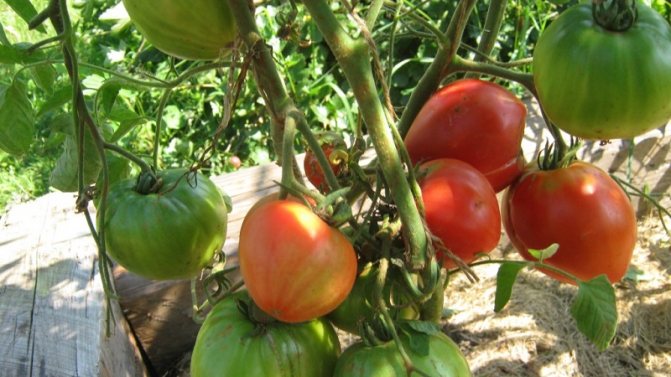

Testimonials
Reviews of gardeners confirm the unpretentiousness of this tomato variety in care. The minimum expenditure of effort and time leads to a rich harvest.
Inna, Tambov region: “Indeed a champion! I got a whole bucket of tomatoes from one seedling. Very large vegetables, which is surprising for such bushes, and the taste is wonderful. I will definitely plant more! "
Valentin, Voronezh region: “My favorite tomato, I plant it every year. I like it very much: the bushes are low, the tomatoes are fleshy and large, and most importantly, they are healthy throughout the season. I just water and feed them. I am always happy with the result ”.

